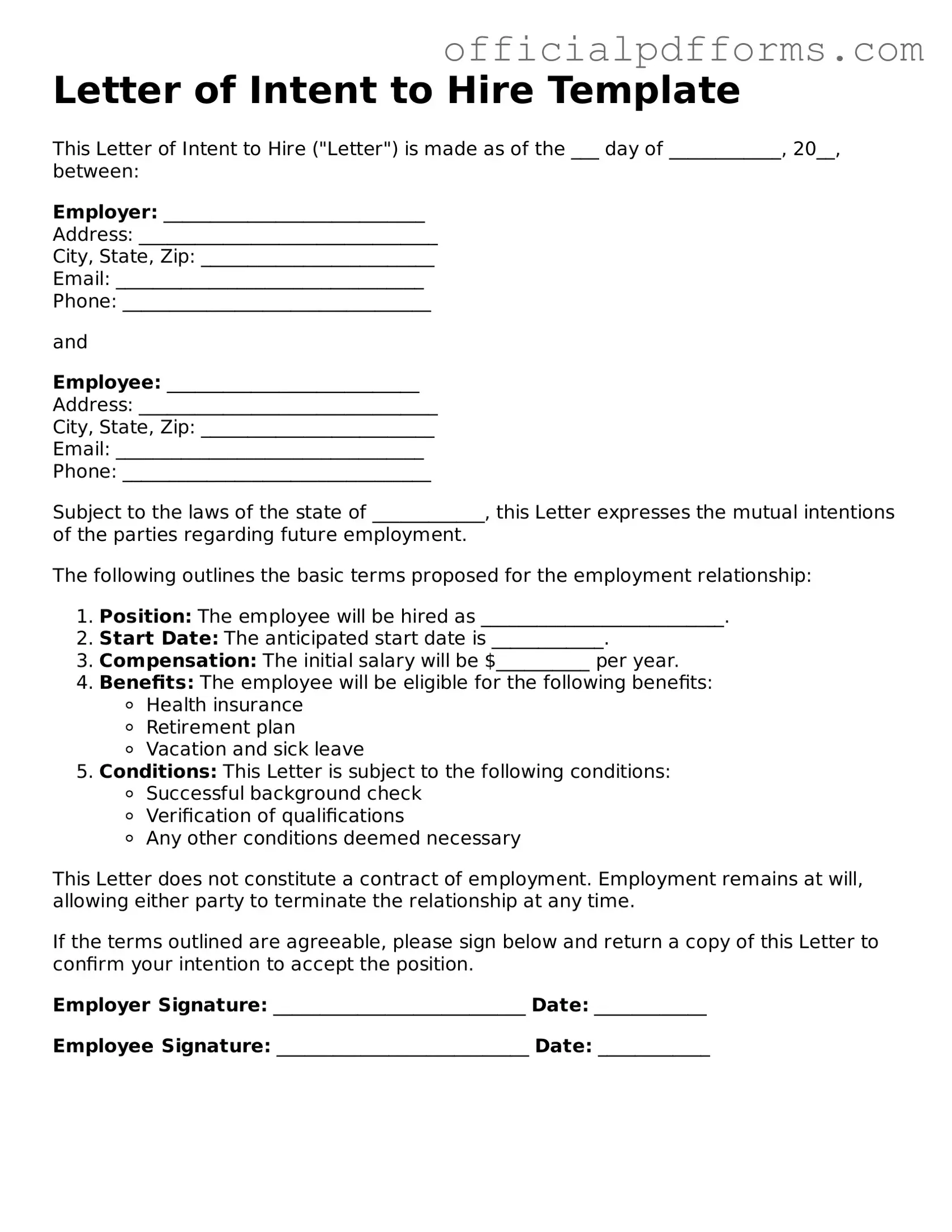What is a Letter of Intent to Hire?
A Letter of Intent to Hire is a document that outlines the preliminary agreement between an employer and a potential employee. It expresses the employer's intention to offer a job, detailing the basic terms and conditions of employment. This letter serves as a formal step before a final employment contract is signed.
Is a Letter of Intent to Hire legally binding?
Generally, a Letter of Intent to Hire is not legally binding. It signifies the employer's intent to hire, but it does not create a contractual obligation. Both parties still have the option to negotiate terms or withdraw from the agreement before a formal contract is executed.
The Letter of Intent to Hire should include the following key details:
-
The name of the prospective employee
-
The job title and description
-
The proposed start date
-
Salary and benefits information
-
Any conditions that must be met before employment begins
When should I send a Letter of Intent to Hire?
Send the Letter of Intent to Hire once you have completed the interview process and decided to move forward with a candidate. It is best to issue the letter before drafting the final employment contract to ensure clarity on both sides.
Can a candidate negotiate the terms outlined in the Letter of Intent to Hire?
Yes, candidates can negotiate the terms. The Letter of Intent is a starting point for discussions. If the candidate has concerns or requests regarding salary, benefits, or other conditions, they should communicate these to the employer promptly.
What happens after the Letter of Intent to Hire is signed?
Once both parties sign the Letter of Intent to Hire, the next steps typically involve finalizing the employment contract. This may include further discussions about specific terms and conditions, completing background checks, and arranging for the start date.
Can I withdraw the offer after sending the Letter of Intent to Hire?
Yes, either party can withdraw from the agreement after the Letter of Intent is sent, as it is not legally binding. However, it is advisable to communicate any changes as soon as possible to maintain professionalism and transparency.
How does a Letter of Intent to Hire differ from a job offer letter?
A Letter of Intent to Hire is generally less formal than a job offer letter. While the Letter of Intent outlines the intent to hire and basic terms, a job offer letter typically includes more detailed information and is often considered a formal job offer, which may be binding upon acceptance.
Is it necessary to have a Letter of Intent to Hire?
While it is not strictly necessary, having a Letter of Intent to Hire can help clarify expectations for both the employer and the candidate. It serves as a useful communication tool during the hiring process and can prevent misunderstandings.
Who should sign the Letter of Intent to Hire?
The Letter of Intent to Hire should be signed by both the employer or hiring manager and the prospective employee. This mutual agreement indicates that both parties are on the same page regarding the terms outlined in the letter.
